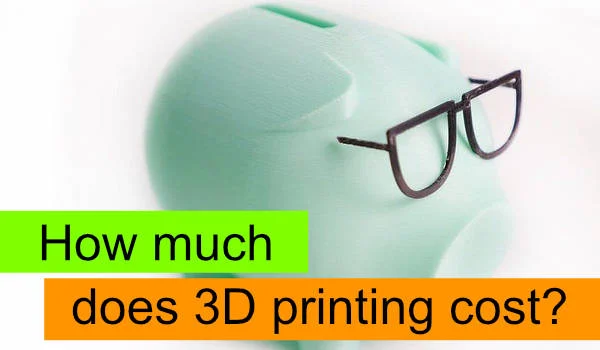How To Calculate 3D Printing Costs

Understanding the true cost of 3D printing is essential for hobbyists, small businesses, and professional services alike. While many focus solely on filament costs, a comprehensive calculation includes several additional factors that impact your bottom line.
The Components of 3D Printing Costs
To accurately calculate the total cost of a 3D print, consider these primary cost components:
1. Material Costs
The most obvious expense is your filament. To calculate material costs:
For example, if your print weighs 120 grams and your filament costs $25 per kg:
Material Cost = (120 ÷ 1000) × $25 = $3.00
Remember that different materials have different costs. Premium filaments like PETG, ABS, TPU, or specialty filaments cost more than standard PLA.
2. Electricity Costs
3D printers consume electricity, and this cost adds up over time, especially for longer prints. To calculate:
For example, if your printer uses 0.2 kW, your print takes 5 hours, and your electricity costs $0.15 per kWh:
Electricity Cost = 0.2 × 5 × $0.15 = $0.15
Note: Most desktop 3D printers consume between 100W (0.1 kW) and 200W (0.2 kW). You can find your specific printer's power consumption in its documentation or measure it with a power meter.
3. Time/Labor Costs
Your time has value, especially if you're running a business. Consider:
- Time spent preparing the model (slicing, adjusting settings)
- Setup time (preparing the print bed, loading filament)
- Post-processing time (removing supports, sanding, finishing)
Even if you're a hobbyist, accounting for your time helps you understand the true cost of a project.
4. Equipment Depreciation
Your 3D printer has a finite lifespan, and parts like nozzles, build plates, and belts wear out over time. To account for this:
For example, if you have a $500 printer expected to last 2,000 printing hours, and your print takes 5 hours:
Depreciation Cost = ($500 ÷ 2,000) × 5 = $1.25
5. Risk/Failure Factor
Not every print succeeds on the first try. Adding a failure rate factor compensates for failed prints and wasted materials:
If you estimate a 10% failure rate and your costs so far are $4.40:
Risk Cost = $4.40 × 0.10 = $0.44
Putting It All Together: Total Cost Calculation
The complete formula for calculating 3D printing costs is:
Using our examples above:
Total Cost = $3.00 + $0.15 + (Labor) + $1.25 + $0.44 = $4.84 + Labor
Using Our 3D Print Cost Calculator
To simplify these calculations, our 3D Print Cost Calculator automatically factors in all these components. Simply input your:
- Filament type and cost
- Print weight
- Print time
- Electricity rate and printer wattage
- Estimated failure rate
- Labor cost (if applicable)
The calculator will instantly generate an accurate total cost for your project.
Cost Optimization Tips
Once you understand your true costs, you can work to optimize them:
- Reduce infill percentage when full strength isn't needed
- Print multiple objects simultaneously to maximize build plate usage
- Optimize print orientation to minimize supports
- Adjust layer height - thicker layers print faster but with lower resolution
- Compare filament brands for the best quality-to-price ratio
Calculate Your Printing Costs Now
Try our free 3D Print Cost Calculator to get an accurate estimate for your next project.
By understanding and tracking all costs associated with 3D printing, you can make more informed decisions about pricing, materials, and project feasibility. Whether you're printing for fun, for clients, or for your own products, knowing your true costs is the first step toward sustainable 3D printing.